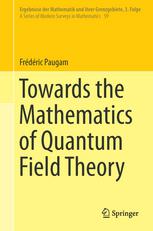

Most ebook files are in PDF format, so you can easily read them using various software such as Foxit Reader or directly on the Google Chrome browser.
Some ebook files are released by publishers in other formats such as .awz, .mobi, .epub, .fb2, etc. You may need to install specific software to read these formats on mobile/PC, such as Calibre.
Please read the tutorial at this link: https://ebookbell.com/faq
We offer FREE conversion to the popular formats you request; however, this may take some time. Therefore, right after payment, please email us, and we will try to provide the service as quickly as possible.
For some exceptional file formats or broken links (if any), please refrain from opening any disputes. Instead, email us first, and we will try to assist within a maximum of 6 hours.
EbookBell Team

4.8
104 reviewsThis ambitious and original book sets out to introduce to mathematicians (even including graduate students ) the mathematical methods of theoretical and experimental quantum field theory, with an emphasis on coordinate-free presentations of the mathematical objects in use. This in turn promotes the interaction between mathematicians and physicists by supplying a common and flexible language for the good of both communities, though mathematicians are the primary target. This reference work provides a coherent and complete mathematical toolbox for classical and quantum field theory, based on categorical and homotopical methods, representing an original contribution to the literature.
The first part of the book introduces the mathematical methods needed to work with the physicists' spaces of fields, including parameterized and functional differential geometry, functorial analysis, and the homotopical geometric theory of non-linear partial differential equations, with applications to general gauge theories. The second part presents a large family of examples of classical field theories, both from experimental and theoretical physics, while the third part provides an introduction to quantum field theory, presents various renormalization methods, and discusses the quantization of factorization algebras.